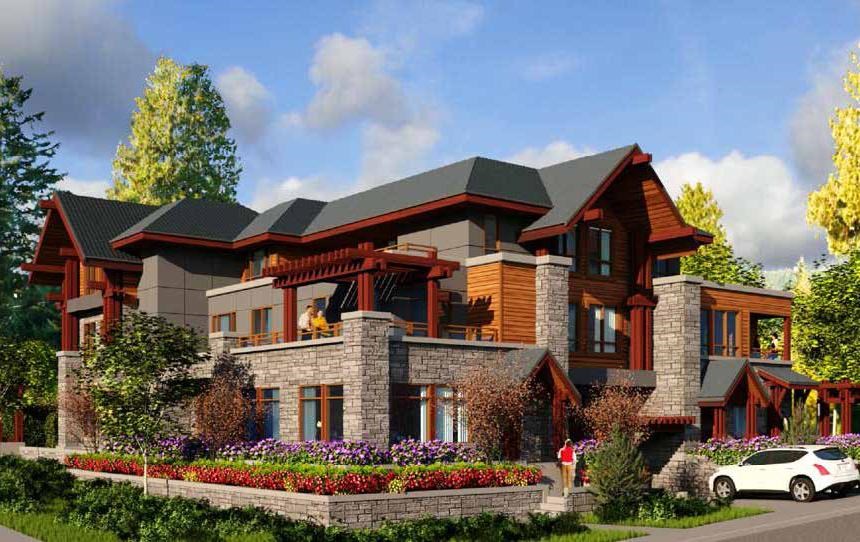A proposed project which would have included eight residential strata units off Marine Drive in West Vancouver has been squashed before it could get out of the gate.
The three-storey townhouse proposal included a mix of one-, two-, and three-bedroom units with underground parking at Marine Drive and 29th Street, kitty-corner to the 29th Street tennis courts.
Prices for the units would start at $875,000, staff noted, rising depending on the size and layout of the unit.
Defeated in a tied vote as Coun. Sharon Thompson was not in attendance Monday night (May 9), what was being described as badly needed “missing middle” housing by several councillors was also admonished for not adhering to the area’s official community plan and being too large of a build on the Altamont block.
The applicant had previously revised the proposed development, after district staff and its design review committee gave feedback in 2021 after a public information meeting was held in January of that year.
In discussing the proposal, Coun. Craig Cameron sought clarification from staff regarding the project’s adherence to the neighbourhood’s OCP and how many “missing middle” applications have been approved in West Vancouver during this council’s term.
Senior community planner Erik Wilhelm confirmed to Cameron that 13 “net new” units, described as “missing middle,” have been approved since 2018.
In reminding fellow councillors that the vote was just to send the proposal to a public hearing, Cameron noted that the development is “exactly what was envisioned in our OCP,” noting the accessibility to transit and cycling infrastructure.
“[We] committed as a community in 2018 to looking at … approving 300 to 350 of these, which is, let's say, roughly 15 a year to 20 a year, in order to meet our housing goals,” Cameron said. “That was a policy of the district and we haven't even … scratched the surface of it during this council term, by any stretch of the imagination.”
In support of the development, Coun. Nora Gambioli noted that aside from the “missing middle” describing monetary values of houses, West Vancouver housing stock really only consists of single-family lots and high rises.
“We have a lot of towers in Ambleside, but there's virtually nothing in the middle. There's no other type of housing. That's what we're calling the missing middle,” she said, adding that the developer’s community amenity contribution of $725,000 would greatly improve pedestrian facilities in the adjacent area.
However, Coun. Bill Soprovich said this proposal “doesn’t sit well with me,” citing the very large development on a small lot, “which bothers me.”
“It has nothing to do with the availability of creating housing. It's what type of housing we're getting, in a situation like what I see in front of me,” he said.
Soprovich noted that while the project might be more affordable than the current average house price in West Vancouver, the starting price is still out of reach for many.
“Maybe I'm out of touch, but I don't see how one young family would accumulate enough money to even put down on a million dollar property or less. It seems to me that we're giving a message out that this was specifically going to help the 'missing middle' world out there. And really, I look at these figures, not only this project, but others, and I just get a feeling that maybe something's amiss,” he said.
While Coun. Marcus Wong said he really liked the design of the building, at “the end of the day, I have to look at the policies within the OCP.”
“The OCP is our Bible, and given that within this Bible, the ultimate neighbourhood built form guidelines do specify and promote maintenance of the ‘country side estate characteristics, such as large lots, mature trees, narrow roads and houses set within a landscape environment,’ as well as a bunch of other criteria. So, given the current build form of this proposal, I'm uncertain that it does meet that neighbourhood context and character,” Wong said.



